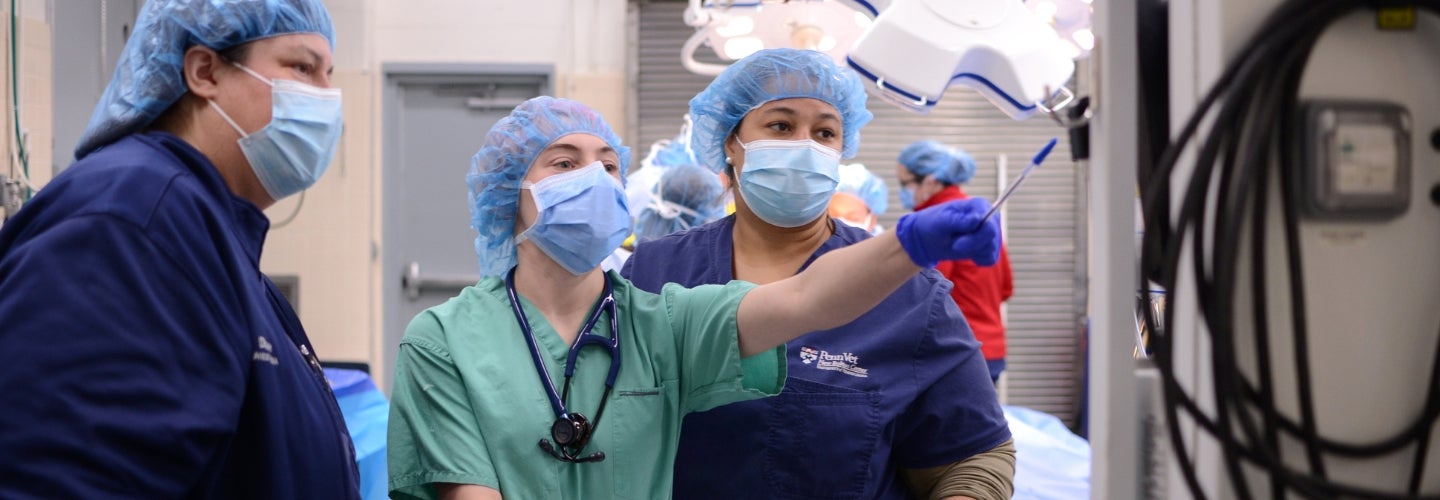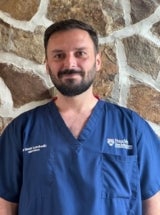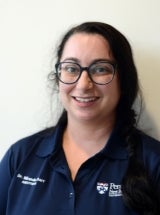
Anesthesia
What We Do
Veterinary anesthesiology has followed human medicine, providing the safest possible anesthetics, assisted ventilation, oxygen delivery, monitoring, and vital status support.
Our Anesthesia Services
Responsibilities, Equipment, and Patients
Our Anesthesia Services
Responsibilities, Equipment, and Patients
About Our Anesthesia Service
Clinical Responsibilities
Under the supervision of board-certified specialists, our anesthesia staff carefully monitors vital functions, including heart rate and rhythm, blood pressure, respiratory functions, and cardiac output.
In addition, they closely assess anesthetic depth and recovery while measuring concentrations of administered anesthetic gases. This vigilant supervision helps ensure the highest level of safety and the best possible outcomes for your animal while under anesthesia.
Equipment
New Bolton Center is provisioned with state-of-the art anesthesia equipment. We have a pool raft recovery system that helps horses recover from general anesthesia and minimizes any self-inflicted injuries during the wake-up period.
Types of Patients
Whether here for a routine procedure or complex colic surgery, anesthesia staff assist a range of patients.
Patients include:
- Zoo and wildlife animals
- Horses
- Ruminants
- Pigs
- Camelids
Our Care Team

Section Chief, Anesthesia
Bernd Driessen, DVM, PhD, DECVPT, DACVAA
Professor of Anesthesiology (CE)
Clinicians
Residents

Jaden Corell, DVM

Ismar Lutvikadic, DVM

Allison Mika, VMD

Miranda Starr, VMD
Applications are Invited for a Residency in Small and Large Animal Anesthesia & Analgesia
The residency in veterinary anesthesia is a three-year program aimed at developing the clinical and technical skills required for administering anesthesia, perioperative patient care, sedation, and pain management to a wide variety of species with diverse medical conditions. The training is designed specifically to fulfill the requirements for Board qualification set forth by the American College of Veterinary Anesthesia & Analgesia (ACVAA), which may be reviewed on the ACVAA website at www.acvaa.org. A detailed Anesthesia Residency Program guide is available upon e-mail request to the program director listed below.
The Anesthesia Residency Program provides the resident with anesthesia experience in a broad variety of species. Small animal and exotic species experience is gained at the Ryan Veterinary Hospital at the University of Pennsylvania in Philadelphia, a very busy hospital with a large (> 5000 animals anesthetized annually) and varied caseload. It is located in West Philadelphia at the heart of the main campus of the University of Pennsylvania, which includes the Medical School and its University Hospital, allowing for close interactions with the School of Medicine. During the first two months of the training program, the resident will attend an introductory class in anesthesiology given to the MD residents of the Department of Anesthesiology.
Large animal anesthesia training occurs at the New Bolton Center Hospital for Large Animals, located approximately 35 miles West of Philadelphia in rural Pennsylvania. The Large Animal Anesthesia Service anesthetizes an average of 1,500 cases per year, predominantly equine, but also including farm animals, wildlife, and zoo species. Exotic, wildlife, and zoo animals are also anesthetized at the Philadelphia Zoo, the Brandywine Zoo in Wilmington, Delaware, and occasionally at other sites.
The anesthesia resident is offered a broad spectrum of didactic teaching classes, seminars, and rounds, as well as clinical opportunities, to develop thorough knowledge and skills in the anesthetic, pain, and perioperative intensive care management of a wide variety of animal patients.
Currently, the anesthesia faculty consists of eight ACVAA or ECVAA board-certified anesthesiologists, four at each facility, all actively involved in the training program. The resident will spend approximately equal time at each facility and is expected to participate in on-call duties at both the small and large animal hospitals.
- Dates of Program: July 1, 2026 – June 30, 2029
- Available positions: One
- Salary: $40,000 (Year One)
- Closing date for applications: February 1, 2026
Qualifying applicants must have graduated from veterinary school (i.e., received a DVM, VMD, or equivalent degree) and completed a one-year rotating internship or equivalent clinical experience (i.e., at least one year of clinical practice in veterinary medicine following graduation).
The application must include:
(a) A letter of intent indicating the reasons for seeking this program and professional career goals
(b) Current résumé or curriculum vitae
(c) Transcript of university performance
(d) A list of three persons (including full addresses and phone/fax/e-mail information) knowledgeable about the applicant’s veterinary school performance, clinical training, and subsequent experiences, and willing to provide a letter of reference.
Currently, only applications from candidates fulfilling the following employment requirements can be considered:
- U.S. Citizenship
- U.S. Permanent Resident Status
- Canadian Citizenship
- Canadian Permanent Resident Status
- Mexican Citizenship
- Mexican Permanent Resident Status
An interview is strongly recommended to familiarize applicants with the program.
Questions regarding the position and application materials can be sent to Dr. Bernd Driessen, the Anesthesia Resident Program Director at driessen@vet.upenn.edu.



